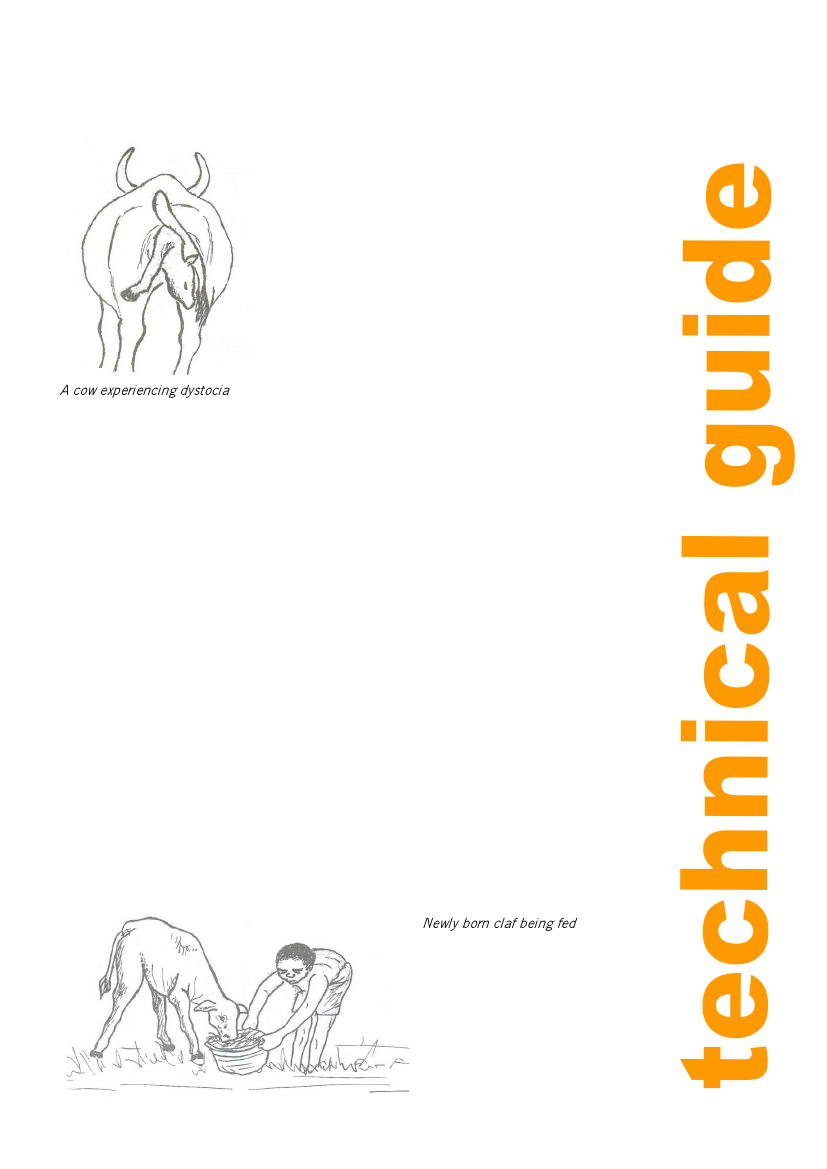
Beef cattle production and management
Practical Action
result from wrong positioning of the calf in the uterus. The use of calving ropes may help when it
is not too complicated. If the situation is complicated, a veterinarian has to be consulted.
A cow experiencing dystocia
Care of the newborn calf
Always handle the calf carefully, as they are vulnerable to disease.
Mucus should be removed from the nose and mouth of the calf
Insert a straw into the calf nose in an attempt to make it sneeze and start breathing
Let the cow lick the calf dry
Facilitate suckling of calf within first 2-3 hours
Make sure the calf suckles eight or more times before the end of the first four days
The navel should be dressed with tincture of iodine or any good disinfectant to
prevent local infection and to help the umbilicus heal quickly
The afterbirth should have come away by 24 hours after birth and if not, gently
pull it out
Importance of colostrum
Feeding of the colostrum to the calf within 3 hours is emphasised because of high nutritive value
and better absorption. Absorption of protective antibodies from colostrum is much reduced after
12 hours. Colostrum contains antibodies to protect against diseases, and its laxative properties
stimulate the removal of the calf’s first faeces.
The feeding of the calf should aim at achieving 1.5 kg/day. A guideline on feeding should be:
10% of the body weight of water each day
3% of body weight of solid feed
14.16% protein in fed given
8-10 MJ /kg dry matter
Calves should eat 2kg meal per day by the seventh week of age.
Newly born claf being fed
Calf housing
The objective of housing calves is to
reduce stress from exposure to cold,
heat and wet conditions which
predispose the calf to infection and
reduce growth rates.
26